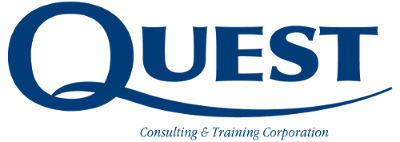Because a leader’s success is defined by the performance of others, learning to manage and improve the performance of one’s staff is a major priority for any successful leader.
The ability to motivate your people depends upon two-way communication of goals and expectations that will cultivate respect and willing participation in a performance improvement plan. Building a stronger team is easier with a performance management system in place that everyone understands and works within.
Performance management is not just a once-a-year review. It must be an ongoing, carefully planned process, year-round. And to be effective, it takes a commitment to coaching and reinforcement that will pay off in the long term. Success is better achieved by partnering with your direct reports to strive for and measure excellence on a regular basis.
Assessing Performance
A first step is to find out where employees stand in relation to their job description and responsibilities. In order to clearly and accurately identify each individual’s strengths and weaknesses, you need to base your assessments on the facts. An objective assessment is possible if you set uniform testing criteria and compare results with a benchmark from within your own organization, or your industry. There are several ways to achieve this. Online surveys, video simulations and other tools can make this important step easy, efficient and cost effective.
Establishing Learning Objectives
To set the individual up for success, you must establish a clear understanding of expectations and where the individuals stands in relation to them. Agreement at this stage is critical to get a buy-in from your employee for the process ahead. Make sure the individual understands the assessment results as they relate to the job expectations for the future. In addition, go over corporate strategic goals and incorporate them into every phase of the performance management plan. Finally, make sure you listen, as well, to the individual’s opinions, goals and suggestions.
Creating an Environment for Success
Gaining commitment to the changes necessary for improvement is key to any program. Once you identify what motivates the individual, you can establish procedures and guidelines for input and feedback.
Together, you and your employee should agree on the phases you need to set up for effective performance management. Based on the individual’s strengths and weaknesses, you set up targeted work plans to focus on improvement of critical skills. If you align individual performance models with the established goals, both personal and corporate, employees are much more likely to commit to success.
Partnering for Improvement
As indicated earlier, the performance improvement process is an ongoing, daily commitment from both manager and direct report. As a leader, you need to be both coach and counselor to keep the individual motivated and on the right track. You must be ready to correct deficiencies as they arise and as they relate to the agreed-upon model for improvement. After all, you have both agreed certain behaviors were to be corrected, so it is important to reinforce the obligation immediately. In addition, you must recognize and reward good performance, especially improved performance on the spot.
This requires more diligence and persistence than many leaders may have invested in the past. But it often delivers the added bonus of increased mutual respect and commitment.
Evaluating and Documenting
A key ingredient for a successful performance improvement plan is agreement and commitment to a follow-up and measurement system. What is the benchmark? When will you review progress? What degree of improvement is expected? In what length of time? What are the consequences of failing to improve? What are the rewards for excelling?
Keeping good documentation of all phases will help both parties understand where they are vs. where they need to be. From initial review and assessment through progressive stages, written evaluations should be based upon facts and agreed-upon criteria. Periodic written communications should include praise as well as critique. Your HR Department will have specific guidelines for permanent employee records requirements, so be sure you also incorporate these into your performance improvement plans.
